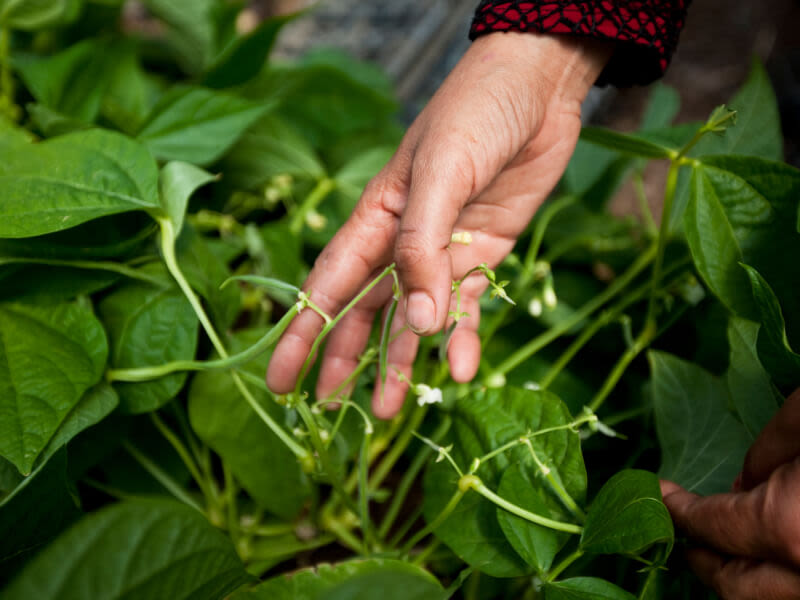For the first time ever, a few lucky and devoted Kiva lenders were extended the opportunity to see Kiva at work on the ground. This past week, these 7 lenders visited 2 Kiva Field Partners and their borrowers in Mexico City, as part of our first lender trip to the field. It was a unique and thrilling opportunity to see Kiva dollars at work, transforming lives and communities up close.
This post is the second of a 4 part series, which came to us during the lender trip. This piece was contributed by Frances, a retired city employee from Arlington, Texas, who has been lending on Kiva since 2007.
In 2007, I remember former President Bill Clinton talking with Oprah about how ordinary folks (like me) could become Kiva lenders by making small loans to ordinary, hard working folks around the world. Such a simple concept, powered by a whole lot of folks connecting across countries and borders. People on this earth, no matter where they live, want to take care of their children, and I lend because I believe in the dignity of work and the value of opportunity in creating better lives for families.
For 30 years in my earlier career, I focused on housing for a large U.S. city government. I inspected dwelling units for safety and decency, endeavored to increase production of affordable housing and drafted loan documents for low income home buyers and providers. On this trip, I was excited to see and hear of how Kiva is partnering with affordable housing producers and families in similar undertakings.
Confession: I've been reluctant to make housing loans on Kiva because:
~ How are borrowers going to be able to repay loans?
~ Why are repayment terms what they are?
~ Doesn’t housing seem secondary in importance to funding a loan to advance economic security through improving income?
~ What is the quality of the housing being produced?
~ Why do some housing loans delinquent?
Today’s trip to the field changed my mind.
 Photo by: Catherine Cocke
Photo by: Catherine CockeFrancesco, the founder of Ecoblock’s Échale a Tu Casa program, shared pictures and stories of communities in Mexico destroyed by floods and earthquakes. A family with 8 children, living in a one room home without plumbing and with mattresses laid on the floor at night. "Imagine," he said, "if the eight of us were living in this conference room in which we were meeting today for the rest of our lives." These cramped living conditions can lead to family violence and prostitution, as girls are lured with a promise to have a room of their own with access to a bathroom. Francesco believes we can have a job, electricity and nutrition, but without a house we have nothing. Everything starts with a house.
Ecoblock cares deeply about preventing overindebtedness. The average cost of home improvements normally range from USD $1,000-$1,500, paid off over 12-18 months, and a new home is, on average, USD $4,000 paid off over 2 years. Compare that with a 30 year mortgage in the United States! Borrowers also cannot pay more than 30% of their monthly income for loan repayments to help protect against overindebtedness. Construction of each house creates 7 jobs. To ensure sustainability, Ecoblock teaches and employs community members to build their own homes a new zero cement block, which is more sustainable and an environmentally green feature.
We met Luz and her husband, who have a home improvement loan, and their family in Xochimilco after taking short boat rides across a man-made lake. Luz makes crafts to sell to tourists, and her husband is a musician. He and his brother gave us the gift of their accordion and guitar music. Lily and Leslie, from Ecoblock, explained that in underwriting the loan, they looked at how often the husband performed his musical engagements to determine capacity for repayments. This is typical of the detail of their process.
 Photo by: Catherine Cocke
Photo by: Catherine CockeThe next borrower, Ana, a single mother, is using her Kiva loan to build a very large house that will shelter at least 13 family members, including 2 brothers and their families. Four workers were busy on site during our visit, constructing a wall. She has long nurtured the dream of building this house, starting with payments to buy the land 10 years ago, and her siblings contributed to the purchase of the land. Ana works very hard and is successful with her cosmetics business. She will likely have a store as part of her corner lot to sell to the neighborhood.
The last borrower was making home improvements for a future wife to live with him at the family home. He is a very enterprising entrepreneur, earning income from offering accounting services, repair services and maintaining the technology for his mother’s business. He, too, was glad to meet us and appreciated the Kiva loan.
 Photo by: Catherine Cocke
Photo by: Catherine CockeMeeting the borrowers and witnessing their energy to make a living for their families and to create better living conditions for them was both humbling and inspiring. None of these borrowers had taken out a loan before, as they have been considered too risky due to their low income levels. For this reason, Ecoblock clients are extremely thankful for the belief and support of their lenders, and are committed to making timely repayments.
Francesco expressed how fantastic the crowdfunding that Kiva offers is to Ecoblock's process. I know that I will be looking forward to making shelter loans, having seen Ecoblock’s work in the field. I believe Francesco makes a convincing argument that housing and decent shelter is the primary security that people need, from which they can build the rest of their lives.
PREVIOUS ARTICLE
Borrower with a heart of gold spreads love with her San Francisco flower shop →NEXT ARTICLE
One woman brewing change in Africa, and beyond →














